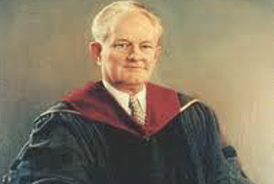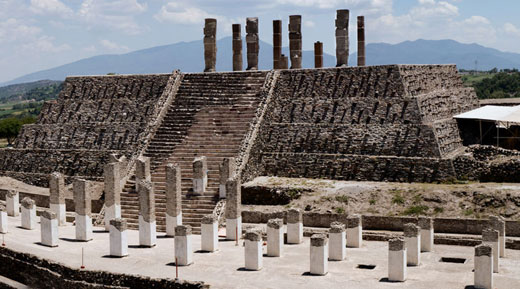Ernest Shurtleff Holmes, founder of Religious Science (a New Thought religious movement),  was born in Lincoln, Maine, the son of William Nelson Holmes, a farmer and laborer, and Anna Heath. The family was relatively poor and moved frequently during Holmes’s youth, but family members remained close. Raised a Congregationalist, Holmes received little formal schooling after his early teens and was largely self-educated. From ages fifteen to eighteen he worked in and around Lincoln before moving to Boston, where he lived for the next seven years and was briefly involved with a Baptist church congregation.
was born in Lincoln, Maine, the son of William Nelson Holmes, a farmer and laborer, and Anna Heath. The family was relatively poor and moved frequently during Holmes’s youth, but family members remained close. Raised a Congregationalist, Holmes received little formal schooling after his early teens and was largely self-educated. From ages fifteen to eighteen he worked in and around Lincoln before moving to Boston, where he lived for the next seven years and was briefly involved with a Baptist church congregation.
Holmes’s reading of Ralph Waldo Emerson’s Essays in 1907 marked the turning point in his life. He accepted “Self-Reliance” as his guide. At the same time, his painful, long-term throat ailment healed. The next year he studied public speaking at the Powers School to prepare for a career on the Chautauqua circuits. He also began attending the Christian Science “Mother Church” in Boston and performed his first mental healings. Holmes’s system, by placing greatest emphasis on the concept of Mind as the operative healing agency, was a modification of the more theistic Christian Science approach.
In 1912 Holmes joined his mother and his brother Fenwicke in Venice, California. Shortly after arriving he abandoned his career as a public speaker and began assisting in his brother’s Congregationalist church while he worked as the city’s playground director for schools and purchasing manager. In 1914 he encountered the work of the English New Thought pioneer Thomas Troward and the American mental healer Thomas J. Hudson. That same year the brothers took a correspondence course offered by the New Thought author and lecturer Christian D. Larson.
In 1915 Holmes gave his first lecture on mental healing, and a year later he and Fenwicke started a mental healing periodical, Uplift. Holmes immediately attracted clients. Unlike some other mental healing practitioners, he never hesitated to charge for his treatments–at first requesting payment in gold pieces. In 1917 he was ordained a Divine Science minister in Seattle by Agnes J. Galer, who had established the first legally chartered Divine Science church in Washington, D.C. In the same year Fenwicke resigned from his church, and together the brothers opened a mental healing sanitarium in Long Beach and in Los Angeles the Southern California and Metaphysical Institute.
In 1917 the brothers began Sunday morning lectures at the Strand Theater in Los Angeles. The work blossomed until the institute soon was attracting students and clients from around the country. In 1919 the brothers turned to publishing, each writing an important New Thought text, Creative Mind by Ernest and The Law of Mind in Action by Fenwicke. In the early 1920s they went on successful lecture tours of East Coast cities; Although lectures were free, courses sometimes cost as much as $25. Yet some courses had as many as 1,000 attendants. In 1925, on friendly terms, the brothers ended their professional relationship. Fenwicke went east and enjoyed great success as a lecturer and writer, while Ernest settled in Los Angeles where two years earlier he had begun lecturing at the Philharmonic Theater.
During 1924 Holmes had traveled to New York City to study with Emma Curtis Hopkins, founder of the New Thought movement. Although his studies lasted for less than a year, Hopkins’s impact on the development of his religious work was significant. His mature thought and the mental healing system he developed were based on his study of New Thought authors, especially Troward, Hudson, Larson, and Ralph Waldo Trine. Holmes’s great work, The Science of Mind, was published in 1926, and the following year he launched what would become the Religious Science movement when he founded the Institute of Religious Science and School of Philosophy. His study with Hopkins likely inspired the establishment of the institute, which would later become the Church of Religious Science. Holmes married Hazel Gillen in 1927.
After founding the institute, Holmes reportedly struggled against increasing pressure to develop an actual religion around his teachings and the institute’s work. He was unsuccessful. In 1939 the ordination of Religious Science ministers began, and by the mid-1940s Religious Science churches were established. At the time of his death in Los Angeles, Religious Science had become the second (only to Unity) largest denomination in the New Thought movement.
Holmes’s most significant contribution to the development of New Thought was his massive Science of Mind textbook and his establishment of the Religious Science movement. Not only is Science of Mind the standard text for both Religious Science denominations (United Church of Religious Science and Church of Religious Science International), but it is widely read in other New Thought sects, and it has been taken as the name for many independent Science of Mind churches. Although the birth of the Religious Science movement occurred largely because of Holmes’s dynamism, the movement’s growth and development were the result of such leaders as Carmelita Trowbridge, Robert H. Bitzer, and William Hornaday, who took the institute in an ecclesiastical direction. Holmes’s approach, and the approach of the movement he founded, differed from others in the New Thought tradition in at least three ways: (1) it emphasized the nonsectarian (non-Christian) character of its teachings; (2) it deemphasized the theistic elements in its theology; and (3) it accorded great importance to the role of the Practitioner.








































